|
Lake Clark National Park and Preserve's 4 million acres include the north end of the Alaska Peninsula in south-central Alaska. The park straddles the Chigmit Mountains, bridging the Aleutian Range to the southwest and the Alaska Range to the north. Mountainous terrain rises from the coastline of western Cook Inlet, framed by rugged peaks and spires, glaciers, and snow-clad volcanoes. West of the mountains lies a region characterized by braided glacial rivers, cascading streams, waterfalls, turquoise lakes, boreal forest and tundra. Unique environmental features and ecosystems support this untamed wilderness. The park's lakes, rivers, and streams protect the water quality and significant portions of the headwaters spawning grounds of the world's greatest salmon runs of Bristol Bay. Both the Kvichak and Nushagak Rivers flowing into Bristol Bay find their headwaters in the park and preserve. Along the Cook Inlet coastline unique and isolated meadows form at the base of towering volcanoes from Lake Clark National Park and Preserve down the coast through Katmai National Park and Preserve. Spring sedges in the meadows provide essential protein for bears emerging from their dens before the summer silver salmon runs begin in the adjacent rivers. Stunning concentrations of coastal brown bears live in these unique environments. The park's active volcanoes are constantly monitored by the Alaska Volcano Observatory of the United States Geological Survey. Redoubt Volcano most recently erupted in 2009 spewing ash across southcentral Alaska and mudflows down the Drift River. In the western portion of the park and preserve lies a land of boreal forest and tundra, both circumpolar biomes of northern latitudes. The human boundaries that define the park and preserve are but artificial lines on a map. This is never more apparent than in the boreal forest and tundra ecosystems where wolves, bears, and other wildlife travel enormous distances to eke out a living, where winds blow from every direction, and interconnected surface and groundwater systems flow in complicated and unknown ways. 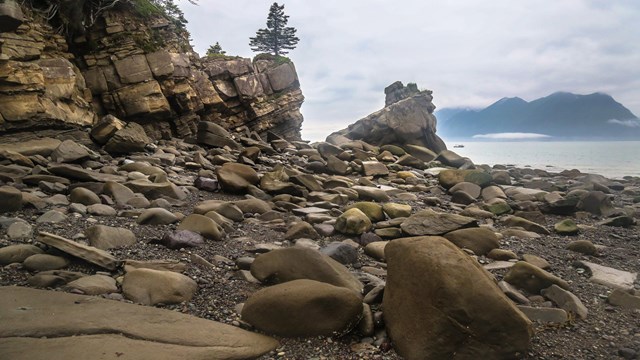
Coasts and Shorelines
Along the Cook Inlet isolated beaches and rocky shores sit at the base of towering volcanoes 
Forests
Boreal forests provide food and shelter for much of the Lake Clark ecosystem 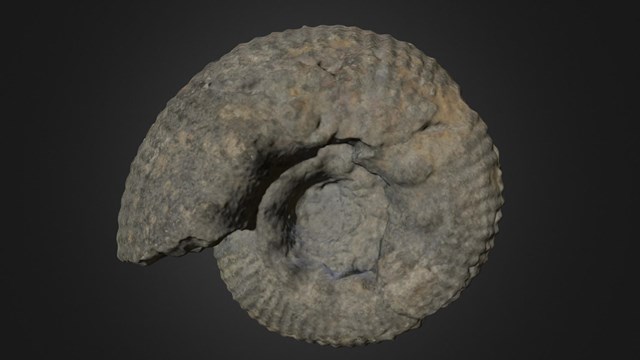
Fossils
The bountiful fossils found in Lake Clark shed light on creatures from a previous world. 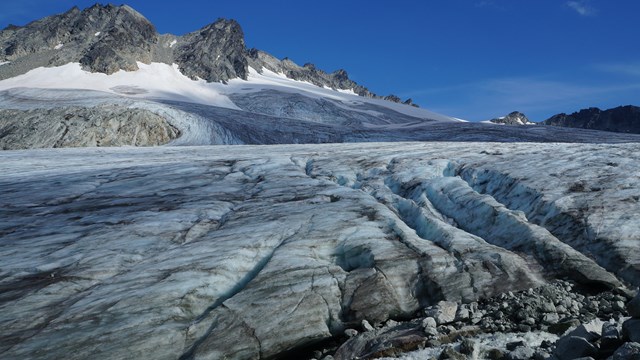
Glaciers
Rivers of ice that carve the landscape itself. 
Coastal Salt Marshes
Salt marshes along the Cook Inlet are vital to bear populations and the Lake Clark ecosystem 
Fresh Water Systems
Lake Clark is home to a vast network of pristine rivers, lakes, and streams. 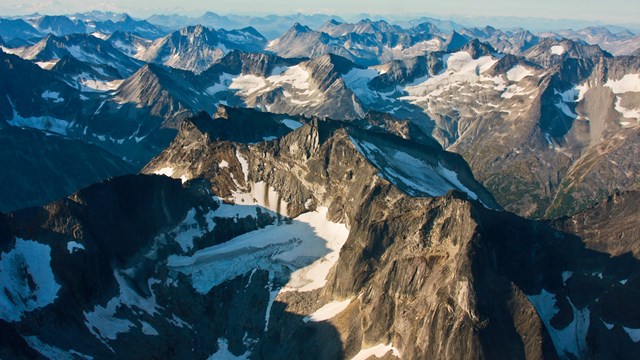
Mountains
Located at the collision of the Aleutian and Alaska ranges, Lake Clark is dominated by the Chigmit and Neacola Mountains 
Rivers and Streams
Wild and untamed, rivers are the lifelines of the ecosystem. 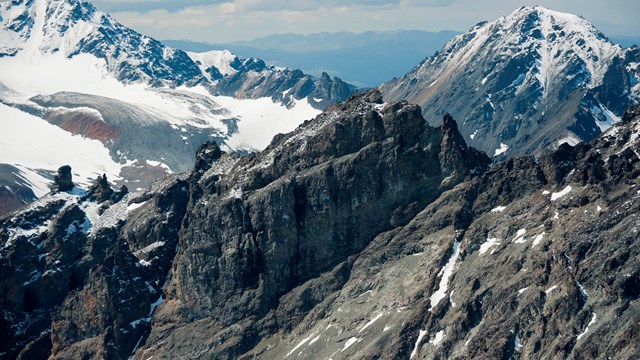
Faults
These cracks in the earth's crust are a hotbed for geological activity. 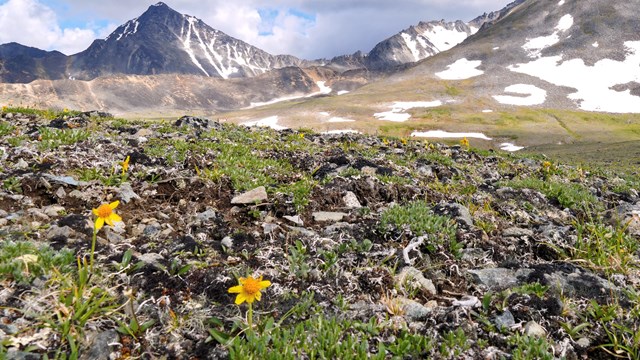
Tundra
Far from being dull and lifeless, tundra is a living patchwork of nature's heartiest survivors. 
Volcanoes
Located on the edge of the storied "ring of fire", Lake Clark has two active volcanoes 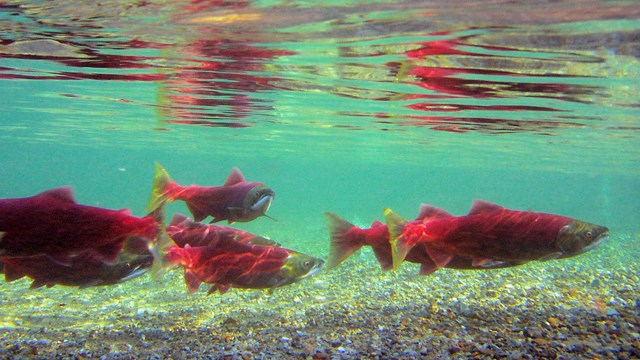
Watersheds
The park was was in part established to protect a portion of the Bristol Bay watershed for the perpetuation of the sockeye salmon fishery. |
Last updated: February 26, 2018
